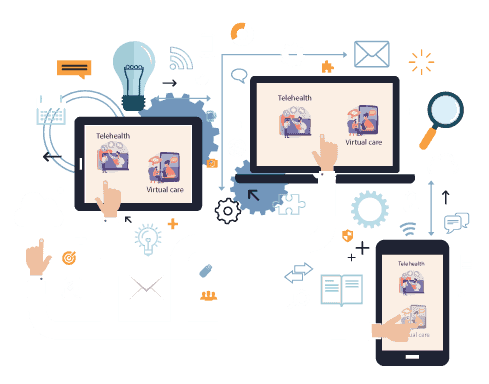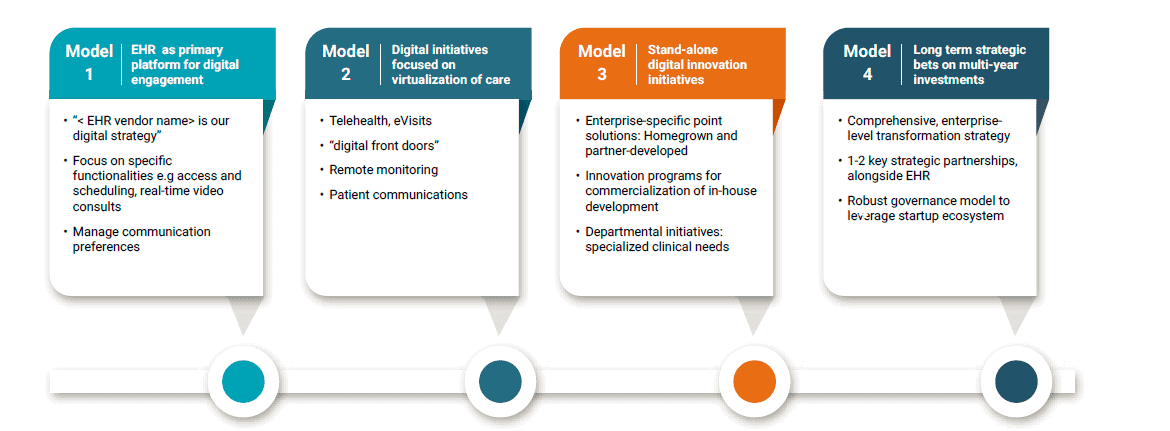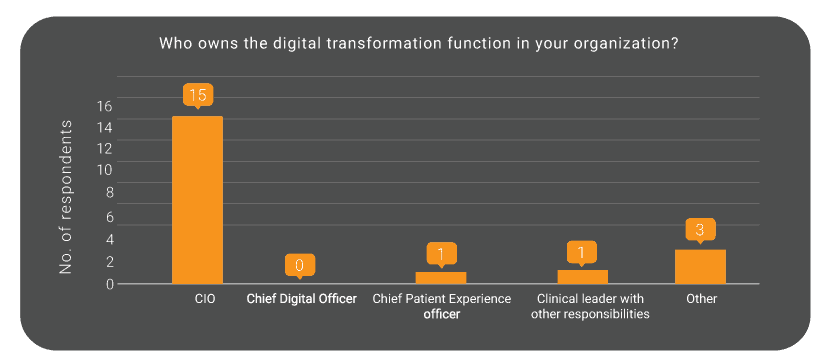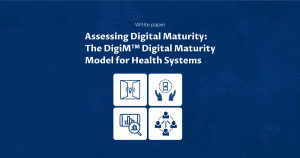Research Paper
Telehealth and
virtual care priorities: a roadmap for mid-tier health systems

Leading health systems in the United States have been on a multi-year digital transformation journey and have used their scale and the resources to invest in accelerating digital transformation. IT leaders in mid-tier health systems now have a unique opportunity to help their enterprises catch up.
Damo Consulting’s ongoing research of the digital initiatives in the top health systems highlights a set of common themes playing out in the top tier of health systems today.
Telehealth and digital front doors are top priorities among top health systems.
What does the picture look like for mid-tier health systems that may not have the resources and the organizational support that the leading health systems enjoy? Our research team recently conducted a focus group discussion with 20 CIOs and technology leaders from mid-tier health systems and all CHIME members, to find out what is happening with their digital transformation journeys.
The current state of digital maturity among health systems
Digital transformation efforts in healthcare correspond with one of the four models described in the visual below:
 Figure 1: Digital health maturity models
Figure 1: Digital health maturity models
Most are at Model 1 or Model 2 right now. It is hard to imagine somebody further along that spectrum.
The current environment for Tier 2 health systems
Tier 2 health systems tend to have certain unique challenges relative to larger integrated health systems. Our focus group discussion highlighted a few key factors:- EHR systems are the primary platforms for digital health programs: Given their financial and resource constraints, Tier 2 health systems in our focus group were mostly dependent on their EHR systems for digital functionalities. However, IT leaders acknowledge the need to look beyond core EHR systems and are beginning to explore standalone platforms (especially telehealth) to enhance their virtual care capabilities, considering the pandemic. In our maturity model, they tend to fall in models 1 and 2 mostly.
- Adoption rates for telehealth models are tied to reimbursements: Many of the health systems in our study were financially impacted by the drop in elective procedures, which were primary contributors to the profitability of the system. An interesting aspect of many of the firms was that they served rural and elderly populations that were not fast adopters of telehealth. Reasons included lack of broadband internet access, population without video-enabled smartphones, and in some cases, a preference for phone visits as opposed to video visits. In all cases, the reimbursement model for telehealth, especially the CMS waivers in the wake of the pandemic, was seen to be helpful but not adequate to cover the revenue shortfall from the drop in in-patient visits.
Organization Models and Best Practices for Healthcare Digital Transformation in A Post-COVID 19 Era
Digital transformation strategy

The IT organization thinks of itself as offering services to caregivers and to those that work and are employed within the health system. Digital transformation is about offering some sort of technology support for patients that are going to be digitally engaging with our system.
What mid-tier health systems CIOs must do
CIOs in mid-tier health systems have a unique opportunity to drive digital transformation in their enterprises.
The shift to telehealth and virtual care models is already underway. Large health systems have been investing
heavily in digital health for the past few years. New market entrants are moving into the primary care space. For
mid-tier health systems, financial constraints and lack of resources may seem like a challenge against these
odds. However, healthcare CIOs can turn this to their advantage.














